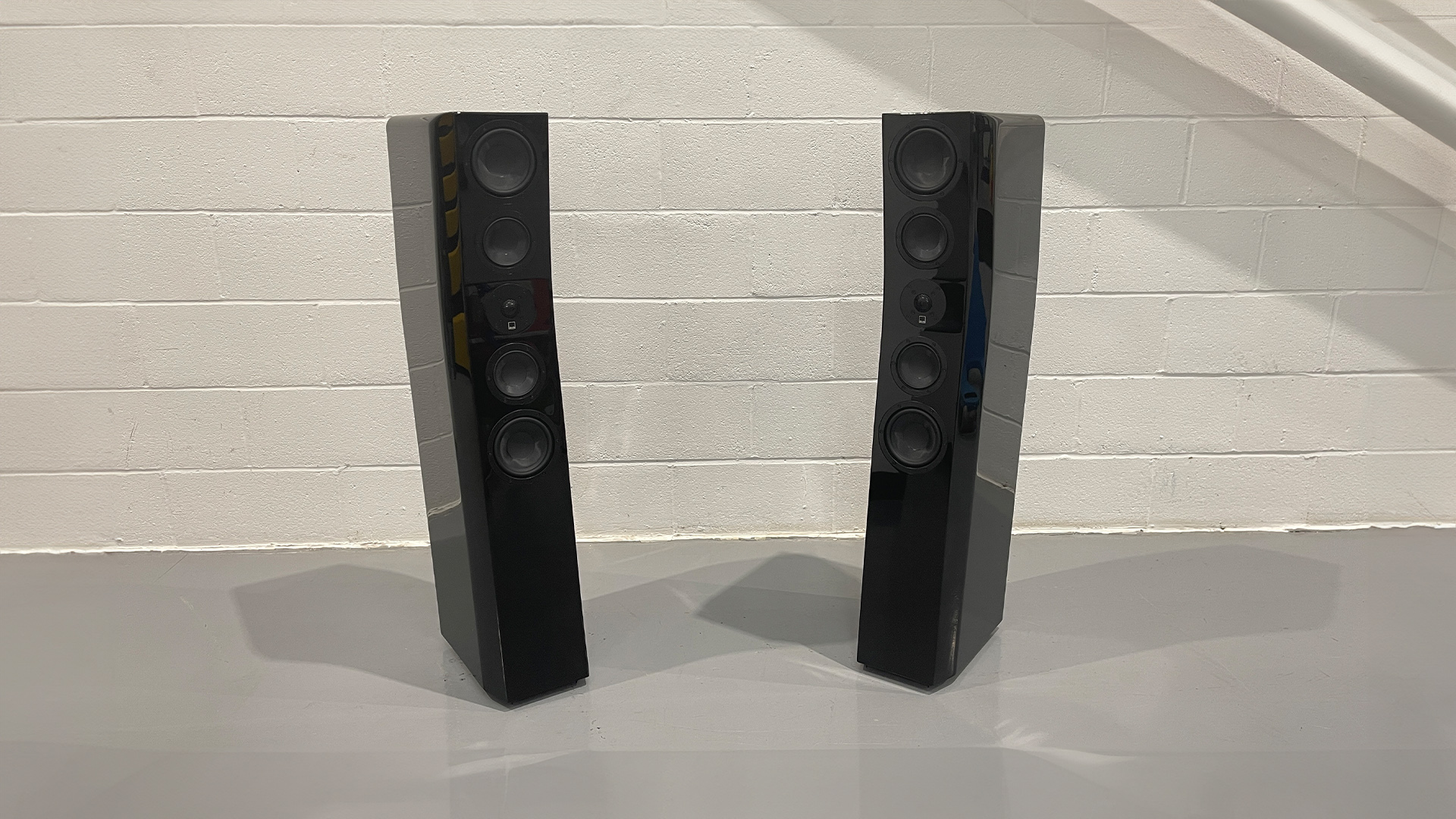What Hi-Fi? Verdict
We admire SVS’s ambition with the Ultra Evolution Towers but the sonic results are too mixed to earn a recommendation
Pros
- +
Ambitious design
- +
Agile and crisp presentation
- +
Expressive dynamics and impressive bass punch
- +
High perceived value
Cons
- -
Lack of refinement and even tonality
- -
That bass punch comes at the expense of finesse
- -
Narrow footprint makes the speakers easy to knock over
Why you can trust What Hi-Fi?
Judged by appearance, we would never have guessed that the SVS Ultra Evolution Towers cost as little as they do. Now, before anyone gets too upset, we fully understand that £3599 / $2999 / AU$6999 is, in general terms, a huge amount to spend on a pair of speakers. But take a look at the impressive engineering content, and it is hard to avoid the feeling that they could be a real disruptor in this price sector.
These speakers are part of the company’s high-end and rather dramatically named Ultra Evolution series, which includes two larger floorstanders, two standmount designs, a dedicated centre speaker and a surround/Atmos module. It is an extensive range designed to cater for both the stereo and multi-channel market.
Build & design
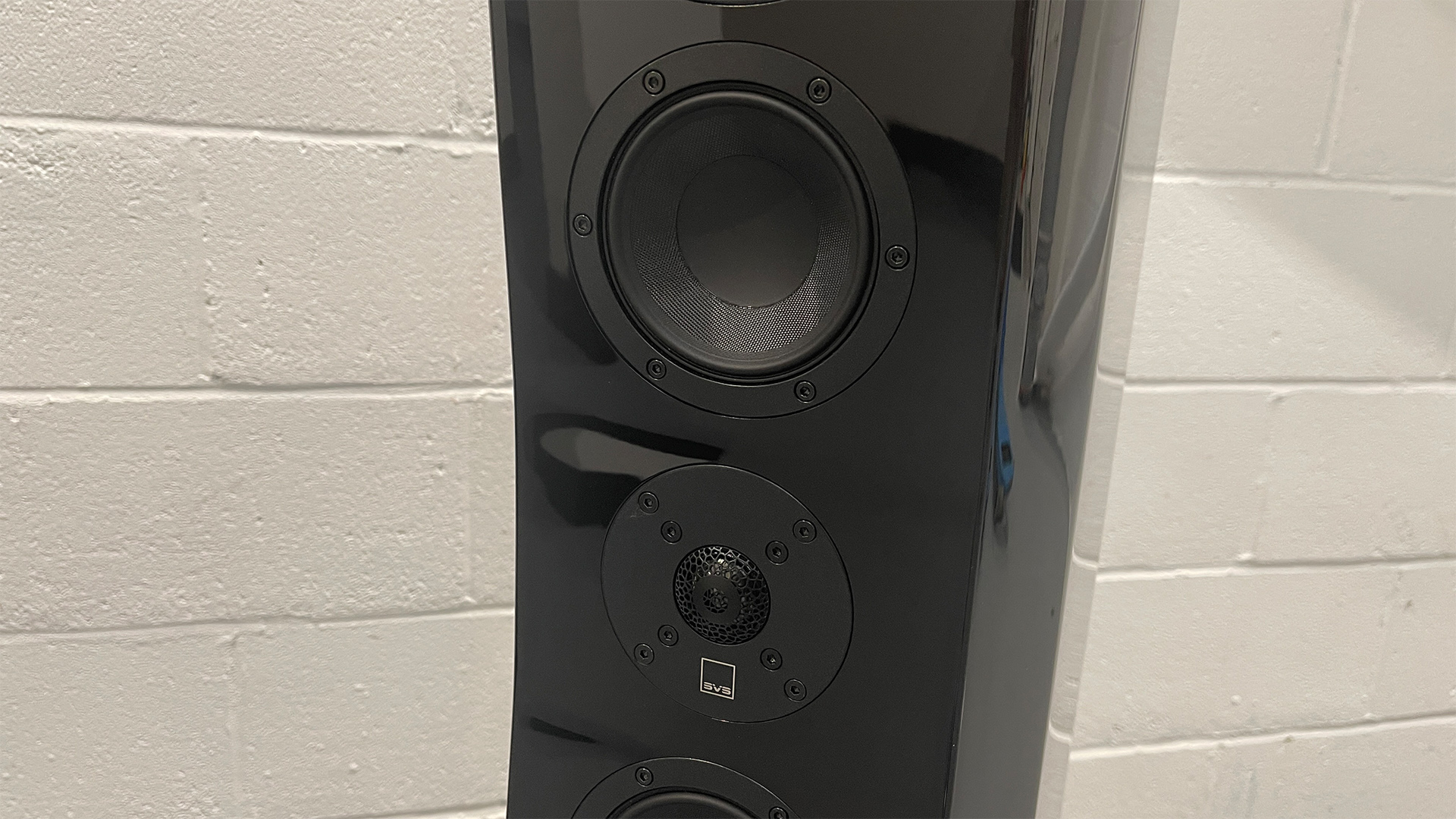
The engineers at SVS have clearly aimed for the stars with this range, and in the Tower produced something that, on paper at least, could impress at even double the money. Let’s start with the drive units. Each of these speakers packs no less than seven of them into its slim frame: a 25mm dome tweeter, a pair of 11cm midrange drivers and no less than four 13cm woofers. These are arranged in what SVS calls an ‘acoustically-centred architecture’, where the drivers are positioned symmetrically around the tweeter to make it sound like the treble, midrange and bass are coming from the same place. The promise is of greater sonic coherence and a better-integrated presentation.
Let’s get to the specifics. Metal dome tweeters are hardly unusual, but things get more interesting when we learn the one in the Ultra Evolution range has a ‘hyper-rigid diamond carbon coating’. The resultant diaphragm should combine lightness, rigidity and a degree of self-damping given the mix of materials. The only other speakers we have tested to boast diamond in their tweeter diaphragms are from the Bowers & Wilkins 800 series. That range has a starting price of more than double this SVS, which simply reinforces the Tower’s excellent on-paper value credentials.
The Ultra Evolution Tower’s array of midrange and bass drivers all use cones made of composite glass-fibre for its combination of light weight and high rigidity. All boast precision cast chassis to ensure the precise alignment of the motor system and good heat dissipation, while vented voice coils help with heat management and aid high-level dynamics.
Given that the company’s reputation is built on designing subwoofers, it wouldn’t be far-fetched to expect something special in the bass department. The Tower’s bass driver quartet is split equally between the front and rear panels. The drivers are configured so that any vibration generated is cancelled or at least minimised by the opposing unit. A pair of rear-firing ports augment the low-frequency output. The crossover points are set at 170Hz for the midrange handover, and then 1.8kHz to the tweeter.
Compatibility
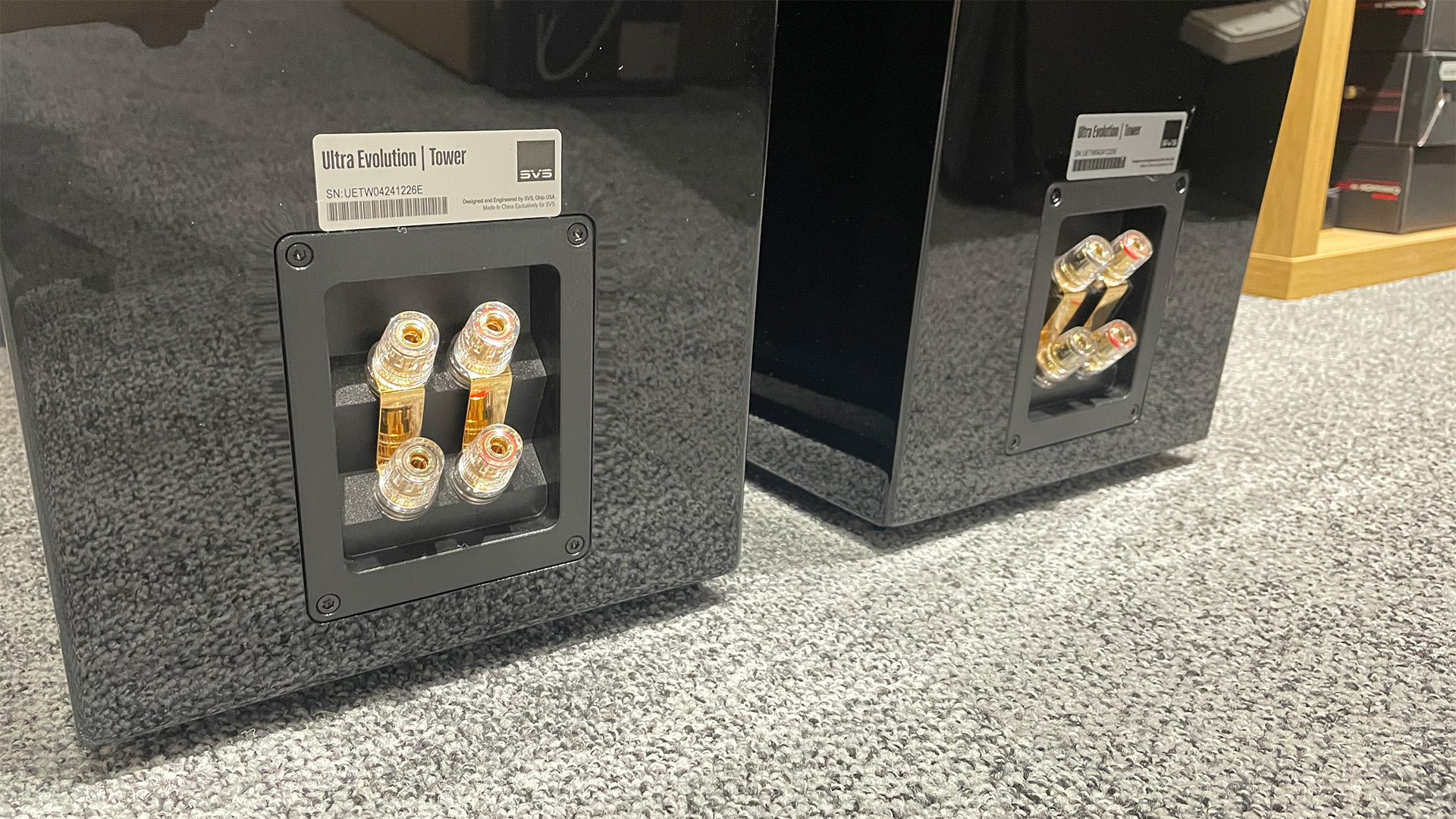
The Tower’s sensitivity is rated at a fairly conventional 87dB/W/m and the nominal impedance is claimed to be 6 ohms. We doubt whether any decent price-compatible amplifier will have trouble driving these speakers, unless it is of the ultra-low output valve variety.
The Ultra Evolution Tower’s cabinet is unusual. It has an angled 25mm thick front baffle that is designed to time-align the five forward-facing drive units. This is the kind of thing normally seen at far higher price points and is intended to compensate for what would be differing distances between the listener and each driver. If done properly this would help in all aspects of sound quality from precision to stereo imaging.
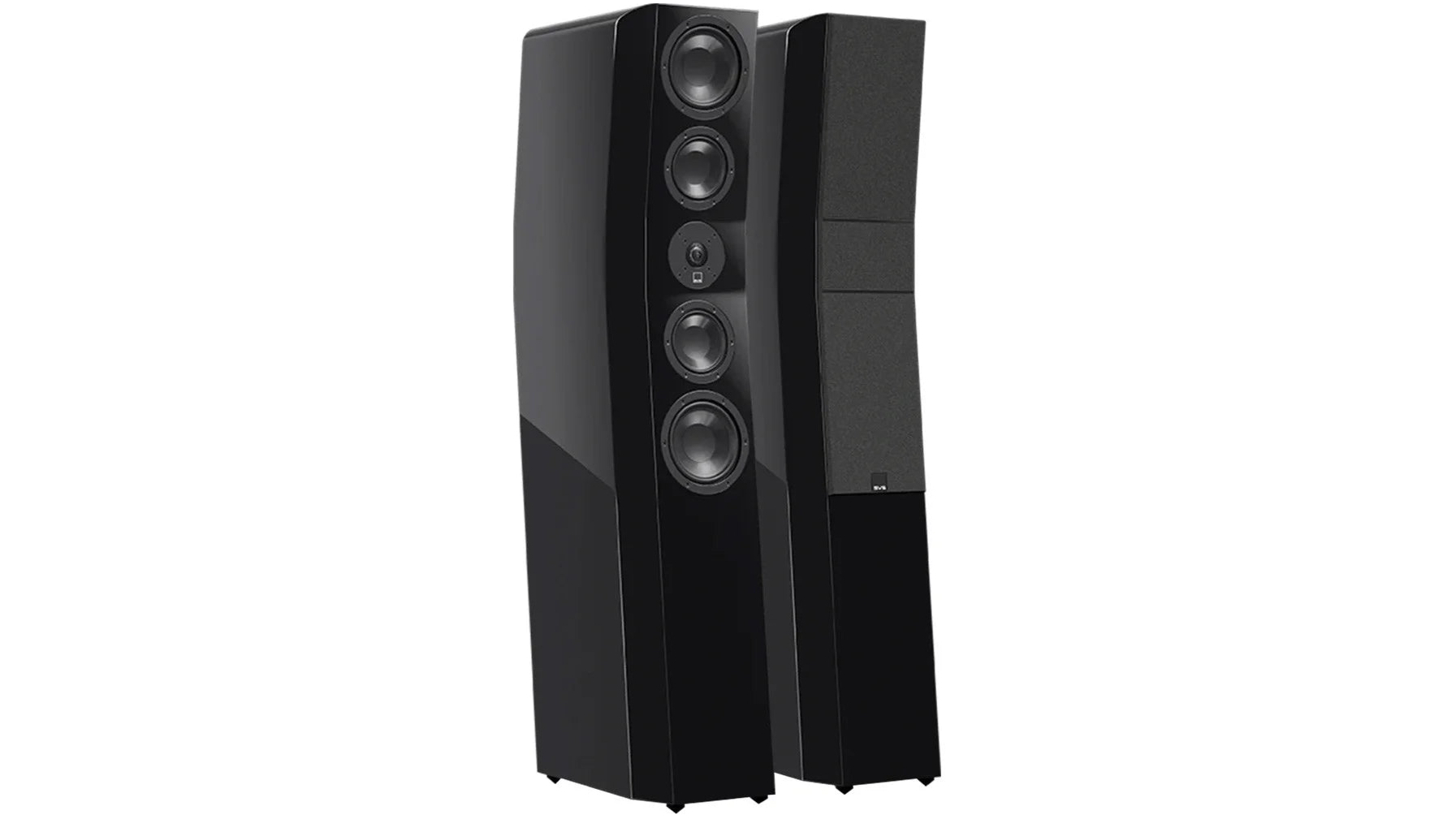
Type Three-way floorstanders
Drive units 25mm diamond carbon-coated aluminium dome tweeter, 11cm glass fibre midrange x 2, 13cm glass fibre bass drivers x 4
Ported? Yes (rear x 2)
Bi-wire? Yes
Impedance 6 ohms
Sensitivity 87dB
Dimensions (hwd) 111.5 x 21.8 x 42.4cm
Weight 27kg
Finishes x 3 (gloss black, gloss white, black oak)
We couldn’t find any information about how far the listener should sit from the speakers to get optimum results, but in our 3m x 7m x 5m test room, the sound from these floorstanders only truly gels once we are at least 2.7 metres away. Given the rear-firing bass drivers and ports, it makes sense to leave plenty of space for the speakers to breathe. Around a metre from the rear wall and at least half as much again from the sides is a good starting point. All told these speakers require a decent size of room if they are to shine.
SVS hasn’t skimped on the enclosure. It is internally braced for added rigidity and is nicely made. There are three finish options: gloss black, gloss white, and black oak. In terms of size, the cabinet is fairly tall at just over 111cm and relatively narrow (21.8cm), which makes it something of a surprise that SVS hasn’t included an additional wider plinth or feet to space the floor spikes further apart. As things stand these speakers feel a little vulnerable to getting knocked over if an enthusiastic child (or adult) were a little careless and bumped into them.
We have a number of the SVS’s floorstanding rivals on site for comparison. Spendor’s smaller and comparatively understated A7 are our current class favourites, though they do cost more at £3950 / $6300 / AU$8499. We also have Focal’s Aria Evo X No3 (£3499 / $5198 / AU$7100). These are refined and detailed speakers that also pack a formidable driver array. Beyond that, for a slightly broader context, we listen to PMC’s Prodigy 5 (£1995 / $2799 / AU$3899) and the ES-14N standmounters (£3750 / $4700 / AU$7495).
Most of our testing is done with our usual reference system of Naim ND555/555 PS DR music streamer, Technics SL-1000R/Kiseki Purpleheart MC record player and Burmester 088/911 Mk III amplifier. We also drive the SVS with PMC’s Cor, Arcam’s A15 and Naim’s Nait XS3, all integrated amplifiers, to see how the Tower copes. All our cables are premium options from Chord Cables and Vertere Acoustics.
Sound
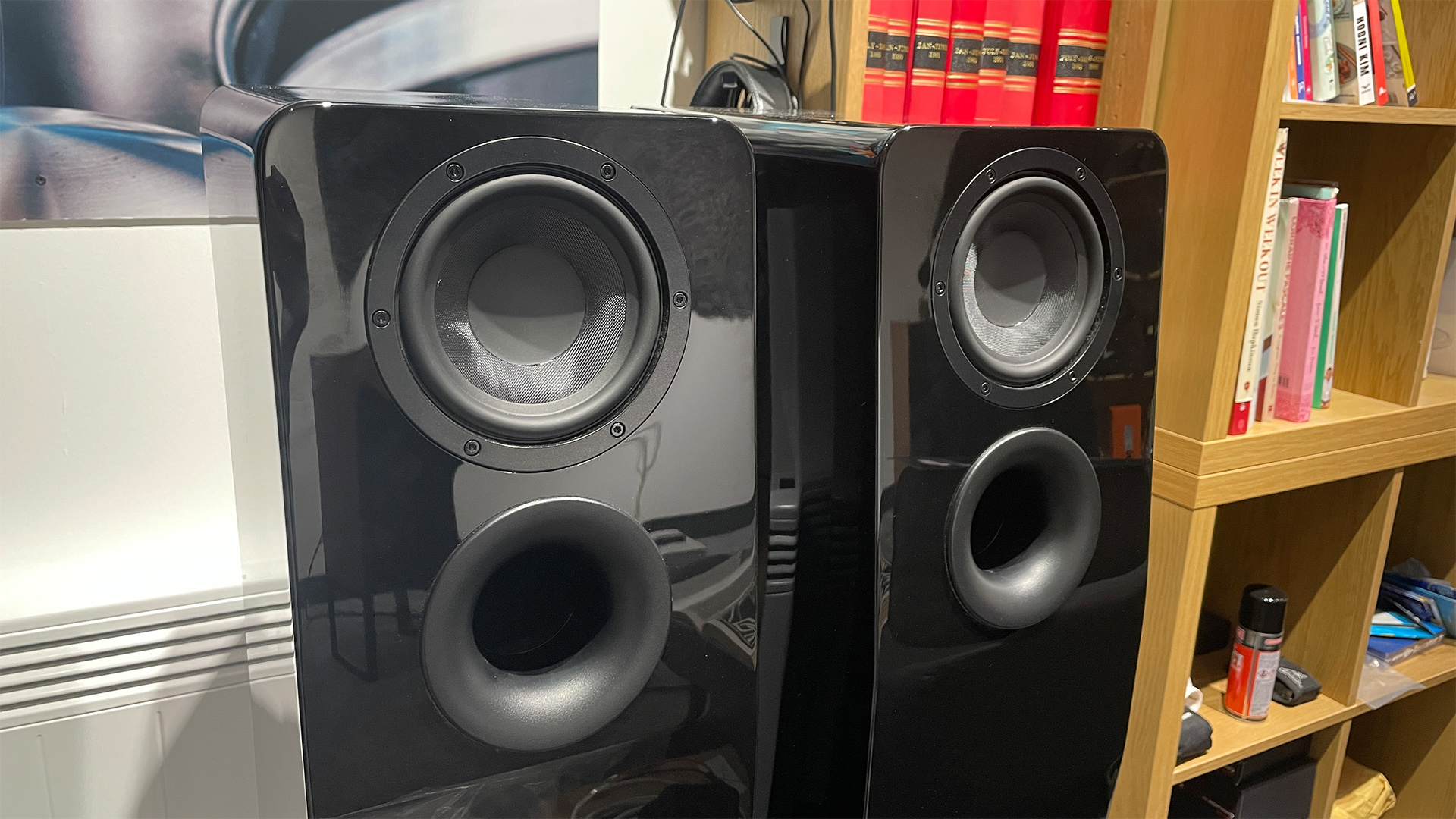
Given the positivity of everything we’ve said about their design and engineering, we have a curiously mixed reaction to the Ultra Evolution Tower’s sonic performance. They undoubtedly do some things well. We notice that they shine when it comes to speed and punch, and also deliver dynamic shifts well. Give them a dramatic piece of music and regardless of genre they will convey it with plenty of enthusiasm and drive.
After a long break from listening to it, we return to Hans Zimmer's The Dark Knight OST and are pleased with the way these floorstanders respond to the challenge. On Like A Dog Chasing Cars, the SVS don’t hold back. They exude confidence, generating a scale of sound that’s considerably bigger than even their sizeable cabinets suggest. Our notes are packed with words like brawny, exuberant and expressive. Lows – and this album is packed with some of the most demanding basslines we know – come through with impressive punch and in generous doses.
As we work our way through our music collection, moving from The Rolling Stones to Prince, First Aid Kit and then Erik Satie’s piano works, it becomes clear that these are speakers that make a great first impression. They have clarity and retain a fine sense of control even when the music becomes demanding. Turn the volume level down and the Towers still retain a good degree of life and keep our interest where many others wouldn’t. In a quick-fire demo, we can see them being preferred over many of the more established contenders.
Yet, despite all these good things we can’t bring ourselves to recommend them. Very few products that pass through our test rooms can be called truly neutral, so in general, we tend to be fairly forgiving of a product’s tonal balance. As long as things are not skewed too far we are happy to forgive. The Ultra Evolution Towers go too far for our tastes with a strong emphasis at both frequency extremes. It sounds a lot like the kind of effect an old-fashioned, less-than-subtle loudness button used to have on amplifiers, and it robs these speakers of naturalness.
Some may not mind this character, pointing to the extra drama it brings to the music, but for us, the trade-off is too big. While it is hard to quantify with electronically generated sounds, the effect is obvious with physical instruments such as piano or guitar, which lose much of their natural harmonic balance, substance and intricate texture. Voices fare no better with Nick Cave’s gritty tones on his Wild God set, sounding unusually malnourished.
While the amount and impact of the Ultra Evolution Tower's lows is impressive, we are less taken with their lack of subtlety and articulation. The similarly-sized Focal Aria Evo X No3 puts its trio of 16.5cm bass drivers to better use, delivering bass with more finesse, control and reach. Also, the SVS are prone to drone with deep, rumbling basslines, pointing to a lack of insight and dexterity at these frequencies. Madonna’s The Power Of Goodbye is a stern test in this respect, and one that the SVS do not clear.
At the other end of the frequency spectrum we find that for all the promise of that diamond carbon-coated tweeter, we get peaky, unforgiving highs that eke out hard edges and aggression in recordings, more so than any rival we tried. Some may argue that is some mark of a high level of resolution, but considering just how much more subtle and insightful the likes of the Spendors, Focals and particularly the Epos sound, we would disagree.
Verdict
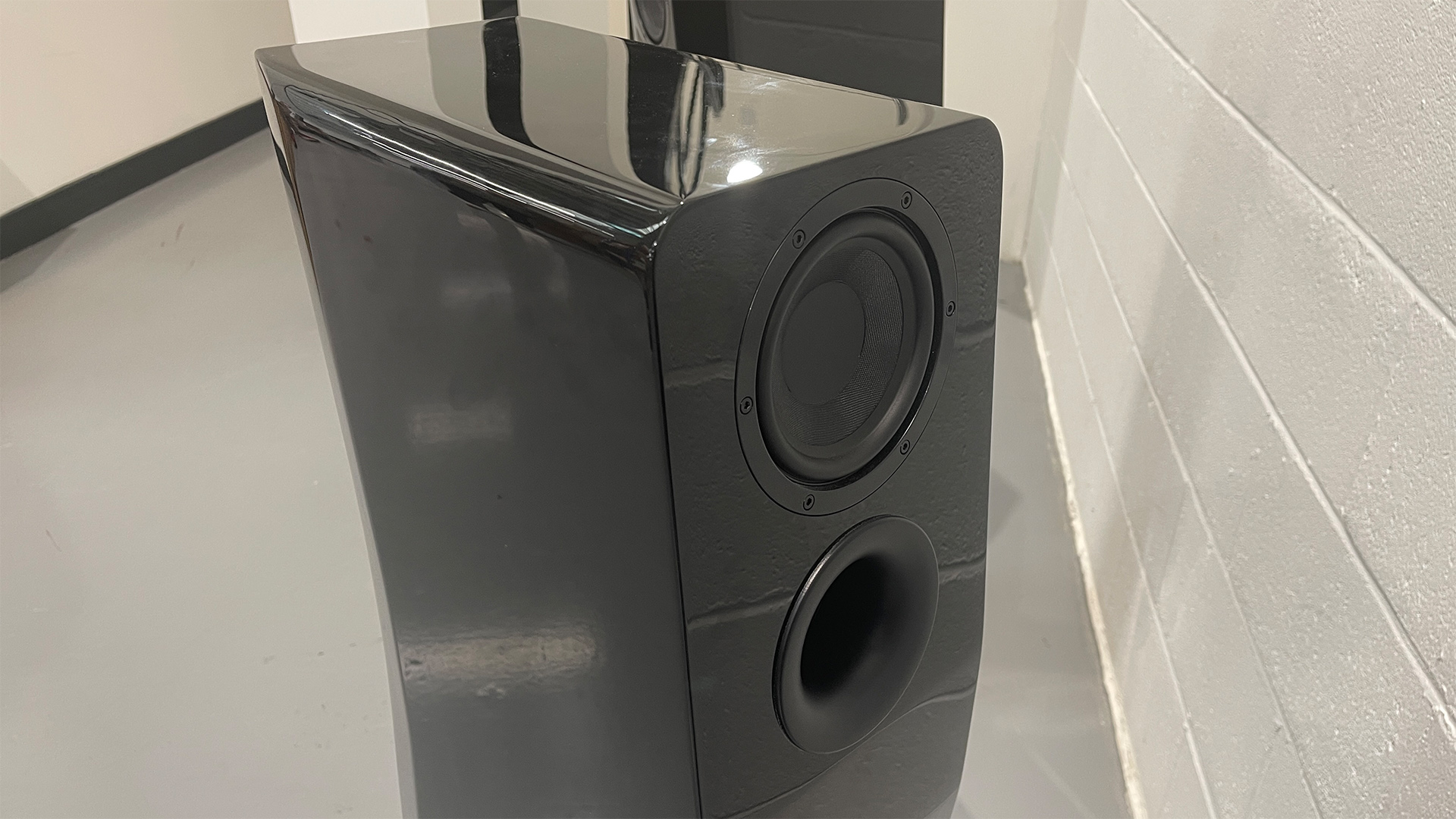
We could go on, but you get the point. For all the fun we get from their upfront nature, these speakers never succeed in fading into the background leaving the music to take the limelight. We can imagine that they might work well in a home cinema context where their energetic delivery may prove a net positive. But when it comes to hi-fi, we would point you towards something that’s better balanced and more capable in its approach.
First reviewed: November 2024
SCORES
- Sound 3
- Build 4
- Compatibility 3
MORE:
Read our review of the Spendor A7
Also consider the Focal Aria Evo X No3
Read our ProAc Response DT8 review
Best floorstanding speakers: budget to premium models tested by our experts
What Hi-Fi?, founded in 1976, is the world's leading independent guide to buying and owning hi-fi and home entertainment products. Our comprehensive tests help you buy the very best for your money, with our advice sections giving you step-by-step information on how to get even more from your music and movies. Everything is tested by our dedicated team of in-house reviewers in our custom-built test rooms in London, Reading and Bath. Our coveted five-star rating and Awards are recognised all over the world as the ultimate seal of approval, so you can buy with absolute confidence.
